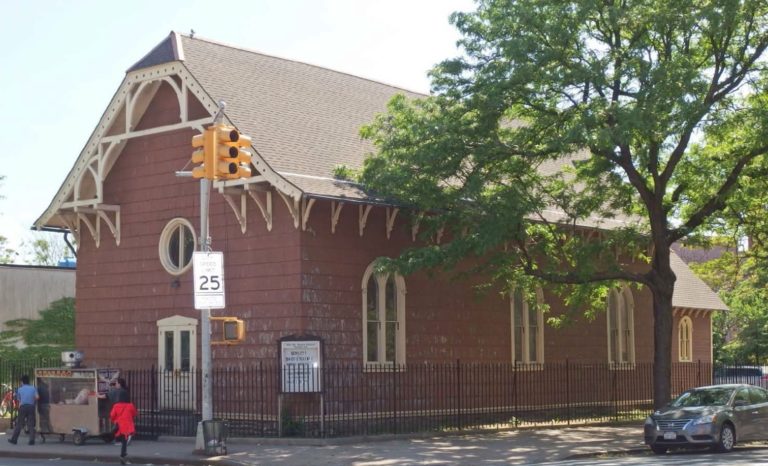By Lauren Brincat, Curator, Preservation Long Island.
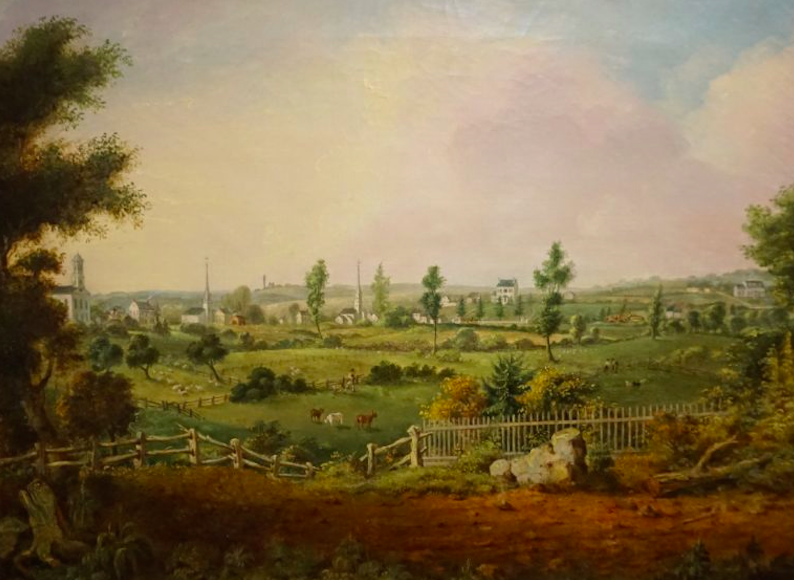
Preservation Long Island is home to an extraordinary collection of regional artworks and artifacts that document Long Island’s ever changing landscape, its rich history, and the people who have called it home. Currently on view at the Preservation Long Island Gallery is an oil on canvas painting of a small Long Island village featuring fenced pastures, country estates, and a street lined with churches, businesses, and homesteads. The artist is unknown, but an inscription on the reverse indicates the setting to be Newtown, Long Island in 1839. It is difficult to imagine that the picturesque townscape painted nearly 180 years ago is today Elmhurst, Queens—a bustling and vibrant urban community. Newtown’s name changed to Elmhurst in 1897, just one year before Queens County was incorporated into Greater New York City.
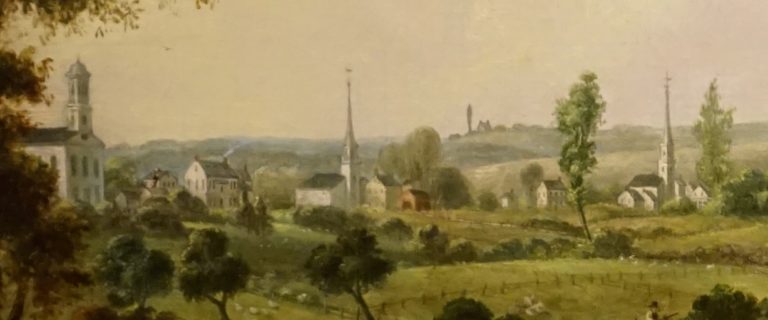
The painting is a wonderful document of the community’s historic structures located today at the intersection of Broadway and 51st Avenue in the heart of Elmhurst. Because of its remarkable detail, it recently served as a valuable research tool for historic preservationists seeking landmark designation for Old Saint James Episcopal Church, whose history dates back to the neighborhood’s colonial settlement.
From the seventeenth century into the middle of the 1800s, Newtown was an agricultural community that raised produce for the New York City market. Preservation Long Island’s 1839 landscape wonderfully captures this rural character of Queens County well into the nineteenth century. When it was painted, the population of Newtown was close to 5,000. Today, about 100,000 people live in Elmhurst, Queens.
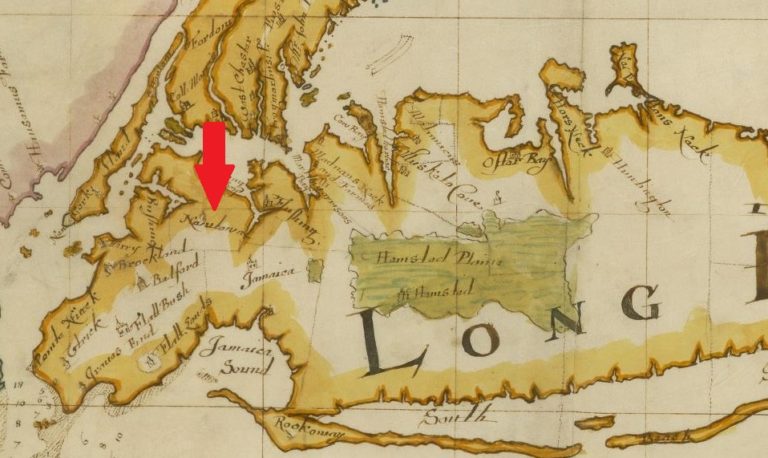
Thanks to the research efforts of preservationist Marianne Hurley, of the New York City Landmarks Preservation Commission—who first brought the identity of the buildings in Preservation Long Island’s painting to our attention—the Old Saint James Episcopal Church received landmark designation earlier this fall. It is New York City’s oldest Church of England building and the second oldest religious building in the City, after the Old Quaker Meetinghouse in Flushing (ca. 1700).
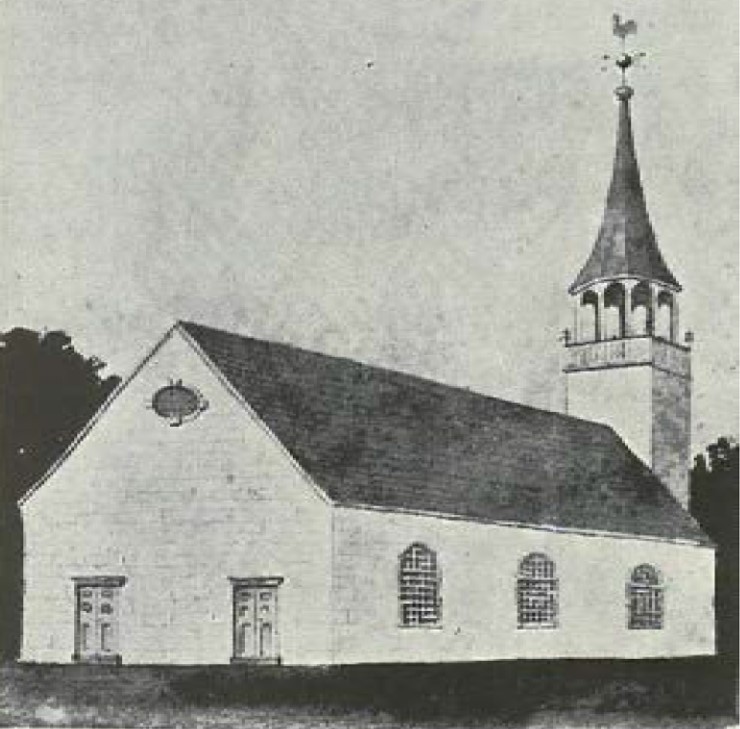
Although the structure lost its tower and steeple and was updated with Gothic Revival and Stick style details in the late 1800s, the building retains its early eighteenth-century rectangular box-like form, wood shingle siding, round-arched windows, and heavy timber framing. With no known photographs of Old Saint James Church dating prior to 1900, Preservation Long Island’s 1839 landscape of Newtown is a rare document of the church’s original appearance and that of its early rural surroundings.
